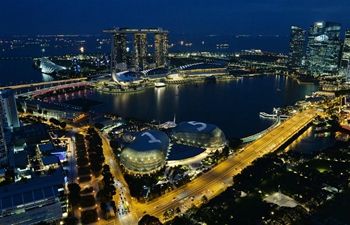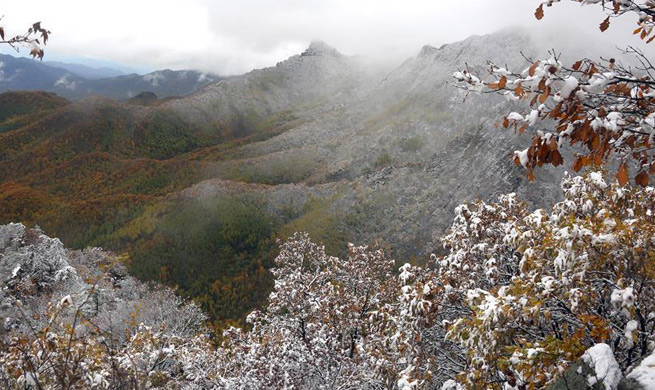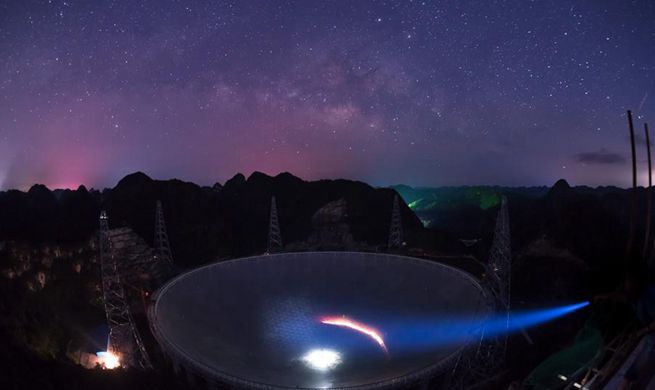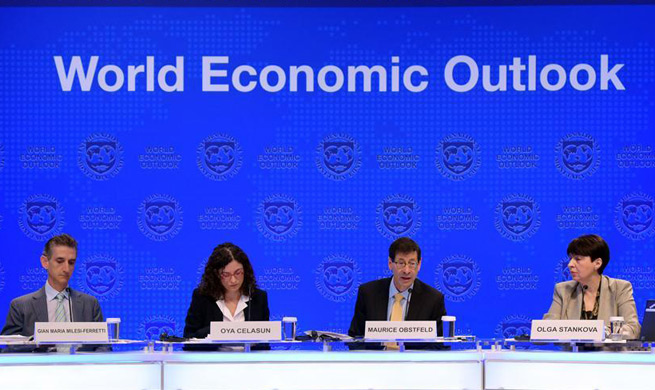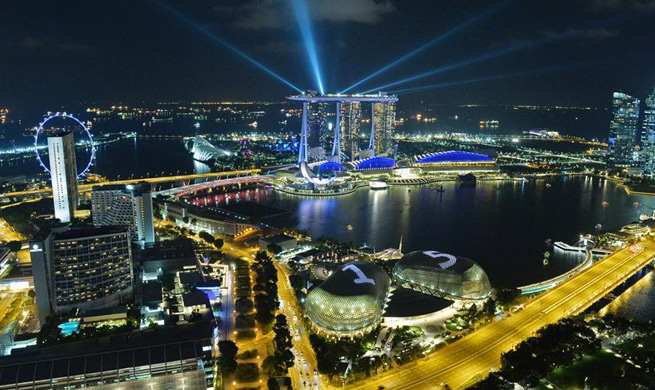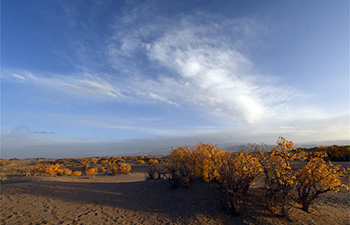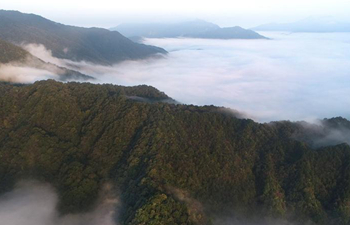MEXICO CITY, Oct. 10 (Xinhua) -- Morning dawns on Mayan lands, north of the Yucatan peninsula. The sun illuminates a giant poplar that guards a secret beneath its roots: the cenote of Kankirixche, a cave with a pool of crystalline water reaching 50 meters down.
Inside this wide pit of stone, catfish swim in the deep as swallows nest in the ceiling made of stalactites. Everything seems nature-made, except for a 35-step wooden staircase that serves to access the spectacle.
Outside, Jose Arceo Ku Ucan, a 62-year-old Mayan citizen, receives visitors and charges them 20 pesos (around one U.S. dollar) to enter. He said the cenote was a secret until two years ago when the small community of Uayalceh agreed to open it to the public.
"There are Sundays when 100 cars arrive," said the Mayan, who was resting in the shade of a tree 15 blocks away from the cenote. Near the well, the only traces of human presence are restrooms and a restaurant built with the support of the government of Yucatan.
FOCUS ON SUSTAINABLE TOURISM
Kankirixche is only an example of how Yucatan is seeking to sustainably maximize its natural attractions where the Mayan civilization prospered almost 2,000 years ago.
The director of Planning, Evaluation and Monitoring for the Yucatan Secretariat of Tourism (Sefotur), Raul Paz, explains that community ecotourism projects have almost doubled from 35 to more than 63 in the last five years.
Through funding and support by the federal and state governments, infrastructure has been built, people have been trained to care for the sites or manage tourists, and projects are being promoted online and offline.
"We have worked on improving the urban image, the construction of hotels and training tourism professionals within community projects that benefit Mayan speakers," said Paz.
The Sefotur official says that Yucatan receives 1.5 million tourists a year, who on average spend at least one night in the local hotels.
But Yucatan now faces the challenge of reconciling how to best protect its attractions with the increasing influx of tourists, which make up over 10 percent of its economy.
Paz said the state has more than 3,000 cenotes, but only 68 are open to tourists as they meet regulations for water cleanliness.
"It is one of the most important challenges ... achieving sustainable tourism. Sustainability is the future of tourism, if we do not conserve the resources we have, we will obviously end them," Paz said.
INTERNATIONAL TOURISM MAGNET
The star attraction of Yucatan is unquestionably the main pyramid of Kukulcan, at the heart of the pre-Hispanic city of Chichen Itza, which is among the 10 most visited archaeological sites in the world along with the Great Wall of China and the Parthenon in Greece.
Nearly 2.5 million people enter the 47-hectare archaeological zone every year, in order to visit the most important political, economic and religious center of the ancient Mayan civilization.
Marco Antonio Santos, director of the world-famous archaeological site Chichen Itza, explains that 80 employees are in charge of guarding and maintaining the site, which receives thousands of tourists daily.
Chichen Itza provides an economic windfall of approximately 4 billion pesos (around 214 million dollars) for Yucatan and the rest of the peninsula, its director said.
Eighty-five percent of visitors are foreigners, most of whom come from the United States and Europe. Since 2010, the influx of Asian tourists, mainly from China, has risen, and this segment now accounts for 5 percent of the 2.5 million annual visitors, Santos said.
Yuna Hou, a 36-year-old tourist from Beijing, was one of them. She had travelled with four Chinese friends to the site.
"It is very impressive and wonderful. One thousand years of history is a long time," she said. "It's a good thing that the pyramid prohibits climbing in order to protect it."





